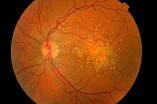(Press-News.org) Two decades after the Americans with Disabilities Act went into effect, people with disabilities continue to face difficulties meeting major social needs, including obtaining appropriate access to health care facilities and services. In an article in the October issue of Health Affairs, Lisa Iezzoni, MD, director of the Mongan Institute for Health Policy at Massachusetts General Hospital, analyzes available information on disparities affecting people with disabilities and highlights barriers that continue to restrict their access to health services.
"A lot of attention has been paid to how health disparities affect people in racial and ethnic minority groups, and this report details how people with disabilities are also disadvantaged," she says. "Most of the literature about these problems has appeared in disability-centered journals that are not very accessible to many people, so one of my goals in putting together this analysis was bringing this information to a high visibility, broadly accessible journal."
Iezzoni, who has used a wheelchair for nearly 25 years because of multiple sclerosis, explains, "An analogy I use to illustrate how disparities among racial and ethnic minorities differ from those affecting people with disabilities is that Rosa Parks made progress towards civil rights when she could get onto that bus and sit anywhere she wanted to. I can't even get onto a bus unless it is adapted for my needs, the bus driver notices me, recognizes my disability, and reacts to it. That kind of need for proactive accommodation applies to health care facilities as well."
The 2010 census found that 54 million Americans -- nearly 20 percent of the population -- were then living with disabilities. Less than half of adults with disabilities were employed, and 27 percent of those with severe disabilities fell below the poverty rate, compared with 9 percent of those without disabilities. Iezzoni's review of several broad-based surveys found that people with disabilities were significantly more likely to report being in fair or poor health than were those without disabilities. They also had higher levels of risk factors such as obesity, smoking and physical inactivity, some which could be linked to a decreased likelihood that primary care physicians would address those issues during routine visits.
In her review of how disability is defined and addressed by the health care system, Iezzoni cites a significant change from an approach centered on available medical solutions coupled with patients' adjusting to their limitations -- the prevalent viewpoint of the 19th and early 20th century -- to the more recent focus on changing the physical, attitudinal and social barriers that compound restrictions imposed by specific physical impairments. She writes that a 2001 report from the World Health Organization "shift(s) the focus from prevention or cure to maximizing functioning and well-being," adding that the Institute of Medicine, in recommending that the WHO framework be broadly adopted, acknowledged that "no single definition of disability can serve all societal needs."
Reported disparities in preventive health care services include lower rates of mammography and Pap tests among women with disabilities. A review of data from National Cancer Institute registries -- coupled with Medicare data -- indicated that women with disabilities diagnosed with early-stage breast cancer were less likely to receive breast-conserving surgery and that those who did were less likely to receive the radiation therapy that treatment protocol requires. Similarly, patients with disabilities diagnosed with the most deadly form of lung cancer were less likely to receive surgery, the only definitive treatment. For both types of tumor, people with disabilities were significantly more likely to die from their cancers.
Iezzoni also cites a major survey's findings that women with mobility disabilities were 70 percent less likely to be asked about contraception during routine medical visits, even though they could be at increased risk of unintended pregnancy because of difficulty using barrier contraceptives or would face heightened risk of complications from birth control pills. Problems accessing health care facilities -- including physician offices and hospital buildings -- were often reported; and equipment such as examining tables, mammography machines or infusion chairs were frequently inaccessible. One major academic health center did not have a wheelchair-accessible scale, requiring a breast cancer patient with paraplegia to be carried onto a standard scale by her oncologist, since the patient's weight is essential to calculating chemotherapy dosage.
"People with disabilities want to be as involved in their care as anyone else would be," says Iezzoni, who is a professor of Medicine at Harvard Medical School. "They don't want to be picked up and placed onto the exam table. If they're able to get onto a table, they want to move themselves; but they need a table they can get onto -- one that automatically lowers to allow them to transfer. Another problem is that most clinicians only see patients with disabilities in the office or in the hospital. They don't see what the patients are doing out in the community. Health care professionals need to understand that people with disabilities have lives outside of their health care needs -- lives in which they may be very active and accomplished. The health care system needs to work on making the accommodations required for effective communication and on giving all patients appropriate physical access."
###
Celebrating the 200th anniversary of its founding in 1811, Massachusetts General Hospital is the original and largest teaching hospital of Harvard Medical School. The MGH conducts the largest hospital-based research program in the United States, with an annual research budget of nearly $700 million and major research centers in AIDS, cardiovascular research, cancer, computational and integrative biology, cutaneous biology, human genetics, medical imaging, neurodegenerative disorders, regenerative medicine, systems biology, transplantation biology and photomedicine.
Health Affairs article focuses on health care disparities facing people with disabilities
2011-10-06
ELSE PRESS RELEASES FROM THIS DATE:
Progression of lung fibrosis blocked in mouse model
2011-10-06
A study by researchers at the University of California, San Diego School of Medicine may lead to a way to prevent the progression, or induce the regression, of lung injury that results from use of the anti-cancer chemotherapy drug Bleomycin. Pulmonary fibrosis caused by this drug, as well as Idiopathic Pulmonary Fibrosis (IPF) from unknown causes, affect nearly five million people worldwide. No therapy is known to improve the health or survival of patients.
Their research shows that the RSK-C/EBP-Beta phosphorylation pathway may contribute to the development of lung injury ...
Novel Stanford math formula can predict success of certain cancer therapies
2011-10-06
STANFORD, Calif. — Carefully tracking the rate of response of human lung tumors during the first weeks of treatment can predict which cancers will undergo sustained regression, suggests a new study by researchers at the Stanford University School of Medicine.
The finding was made after scientists gained a new insight into therapies that target cancer-causing genes: They are successful not because they cause cell death directly, but instead because they slow the rate of tumor cell division. In other words, squelching messages promoting rampant cell growth allows already ...
Distribution atlas of butterflies in Europe
2011-10-06
Halle/Saale and Berlin. Scientists present the largest distribution data compilation ever on butterflies of an entire continent. The Germany based Society for the Conservation of Butterflies and Moths GfS ("Gesellschaft für Schmetterlingsschutz"), the German Nature Conservation Association NABU ("Naturschutzbund Deutschland") and the Helmholtz-Centre for Environmental Research (UFZ) are delighted to announce the publication of the „Distribution Atlas of Butterflies in Europe".
The atlas was initiated by Otakar Kudrna and is a result of the joint efforts of a team of authors, ...
Immune mechanism blocks inflammation generated by oxidative stress
2011-10-06
Conditions like atherosclerosis and age-related macular degeneration (AMD) -- the most common cause of blindness among the elderly in western societies -- are strongly linked to increased oxidative stress, the process in which proteins, lipids and DNA damaged by oxygen free radicals and related cellular waste accumulate, prompting an inflammatory response from the body's innate immune system that results in chronic disease.
In the October 6, 2011 issue of Nature, researchers at the University of California, San Diego School of Medicine, as part of an international collaborative ...
Survival increased in early stage breast cancer after treatment with herceptin and chemo
2011-10-06
Treating women with early stage breast cancer with a combination of chemotherapy and the molecularly targeted drug Herceptin significantly increases survival in patients with a specific genetic mutation that results in very aggressive disease, a researcher with UCLA's Jonsson Comprehensive Cancer Center reported Wednesday.
The study also found that a regimen without the drug Adriamycin, an anthracycline commonly used as a mainstay to treat breast cancer but one that, especially when paired with Herceptin, can cause permanent heart damage, was comparable to a regimen ...
First comet found with ocean-like water
2011-10-06
ANN ARBOR, Mich. -- New evidence supports the theory that comets delivered a significant portion of Earth's oceans, which scientists believe formed about 8 million years after the planet itself.
The findings, which involve a University of Michigan astronomer, are published Oct. 5 online in Nature.
"Life would not exist on Earth without liquid water, and so the questions of how and when the oceans got here is a fundamental one," said U-M astronomy professor Ted Bergin, "It's a big puzzle and these new findings are an important piece."
Bergin is a co-investigator on ...
Women exposed to diethylstilbestrol in the womb face increased cancer risk
2011-10-06
A large study of the daughters of women who had been given DES, the first synthetic form of estrogen, during pregnancy has found that exposure to the drug while in the womb (in utero) is associated with many reproductive problems and an increased risk of certain cancers and pre-cancerous conditions. The results of this analysis, conducted by researchers at the National Cancer Institute (NCI), part of the National Institutes of Health, and collaborators across the country, were published Oct. 6, 2011, in the New England Journal of Medicine.
Beginning in 1940, diethylstilbestrol, ...
Detroit, MI Dentist Caters to Patients' Needs Through Exceptional Services
2011-10-06
Dr. Abraham Azzouz, Detroit, MI dentist, is pleased to offer patients unique services to meet their every dental need when possible. Grand River Family Dentistry offers patients services including emergency dental appointments, extended office hours, welcomes new patients and walk-ins in a convenient location.
"I want my patients to receive the best care available, and that can be seen through our exceptional services. By offering services such as emergency dental appointments and extended office hours, I am happy to be able to offer dental care whenever patients ...
Most ancient supernovas are discovered
2011-10-06
Supernovas -- stars in the process of exploding -- open a window onto the history of the elements of Earth's periodic table as well as the history of the universe. All of those heavier than oxygen were formed in nuclear reactions that occurred during these explosions.
The most ancient explosions, far enough away that their light is reaching us only now, can be difficult to spot. A project spearheaded by Tel Aviv University researchers has uncovered a record-breaking number of supernovas in the Subaru Deep Field, a patch of sky the size of a full moon. Out of the 150 supernovas ...
Dentist in Warrenton Encourages Patients to Take Charge of Their Oral Health this Fall Season
2011-10-06
Drs. Yung and Jelinek, experienced dentists in Warrenton, urges patients to take charge of their smiles this October for National Dental Hygiene Month. Every October, Drs. Yung and Jelinek join dental professionals across the country to promote the importance of dental hygiene and the connection between a healthy, balanced diet, and good oral health.
"Occasionally eating candy is ok as long as you follow it up by brushing your teeth. Problems arise when patients allow the sugar from candy to stay on their teeth over time, which then can attack the tooth enamel. ...




